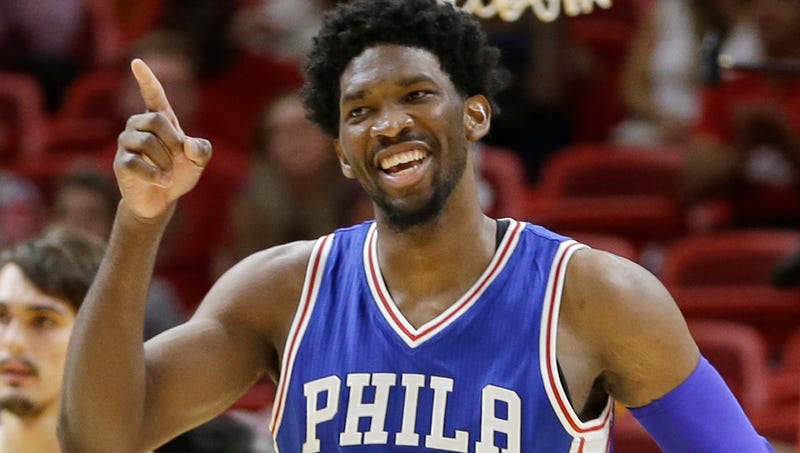Why Not To Count Out The ACC

The "best conference in the country", might not have a 1-seed come selection Sunday, but here are all the reasons why the ACC will still have success in March.
Every year, the B1G-ACC Challenge gives college basketball fans a three day slate of matchups of the two premier conferences in college basketball, often resulting in the winner being crowned the best conference in the country. The ACC won the first 10 challenges, but had not won since 2008, and since then the B1G had been considered at the very least on par with the ACC as the best conference in the country. Then the ACC dropped the hammer on the B1G this year, winning the challenge nine games to five, for their first win in eight years.
The ACC's victory this year could easily be understood as the B1G having a down year (they are), but in matchups of likely tournament teams, the ACC went 4-1 (4-2 if you count Indiana's win before they turned into a pretender).
So this begs the questions: Is the ACC just the best conference top to bottom? Or will they dominate the tournament too?
The way the season has played out, it's tough to pick out a favorite, or even a likely Final Four, and because of the parity in the ACC, the conference is unlikely to receive a 1-seed come selection Sunday after Virginia's upset of #5 North Carolina Monday night. But the parity also suggests that the ACC is loaded with good teams. According to ESPN's Joe Lunardi, the ACC would have five teams as 5-seeds or better, with Virginia and Notre Dame (currently both 5-seeds) both on the rise.
Despite UNC's loss Monday night, the Tar Heels along with Louisville will both likely be 1 or 2-seeds, but they aren't the only teams from the ACC poised to make a run in March. Florida State, Duke, Notre Dame, and maybe even Virginia after Monday night's performance are all teams that other top seeds will not look forward to facing once the Madness begins.
While the Pac12 has three top-10 teams (arguably top-5), no conference has the depth that the ACC has, and we haven't even mentioned Miami, Virginia Tech, and Syracuse who all have a shot at making the dance. ESPN's BPI (basketball power index) rankings show four ACC teams in the top-10, double the amount of any other conference.
Another thing the ACC has is balanced scoring from all of their contending teams, even likely ACC Player of the Year Luke Kennard of Duke has back court mates Grayson Allen and Jayson Tatum each averaging at least 15 points per game. If we've learned anything from the past five years or so, it's not about having one elite player in March, even the Kentucky and Duke teams that have won titles did so with balanced scoring from a handful of contributors.
The two top teams (Louisville and UNC), fit that mold. Louisville as usual relies on their defense and quick back court duo of Donovan Mitchell (16.1 ppg) and Quentin Snider (12.1 ppg), along with a revolving door of big men (four bigs averaging at least 6 ppg and 4 rpg). Carolina relies a bit more heavily on their starters, primarily Justin Jackson (18.4 ppg, 39% 3pt), Joel Berry (14.7 ppg, 40% 3pt), and the two-headed post monster of Kennedy Meeks and Isaiah Hicks (combined 24 ppg, 57% FG).
Another thing the ACC has is balanced scoring from all of their contending teams, even likely ACC Player of the Year Luke Kennard of Duke has back court mates Grayson Allen and Jayson Tatum each averaging at least 15 points per game. If we've learned anything from the past five years or so, it's not about having one elite player in March, even the Kentucky and Duke teams that have won titles did so with balanced scoring from a handful of contributors.
The two top teams (Louisville and UNC), fit that mold. Louisville as usual relies on their defense and quick back court duo of Donovan Mitchell (16.1 ppg) and Quentin Snider (12.1 ppg), along with a revolving door of big men (four bigs averaging at least 6 ppg and 4 rpg). Carolina relies a bit more heavily on their starters, primarily Justin Jackson (18.4 ppg, 39% 3pt), Joel Berry (14.7 ppg, 40% 3pt), and the two-headed post monster of Kennedy Meeks and Isaiah Hicks (combined 24 ppg, 57% FG).
So what does this all mean for the ACC as we enter March? It means that while the conference may not have a 1-seed come selection Sunday, it would be foolish not to pick at least a couple ACC teams to make the Elite Eight in your brackets.
After all, the ACC had four teams make the Elite Eight last year, two of which made the Final Four, with Carolina ultimately making it within seconds of a National Title.



